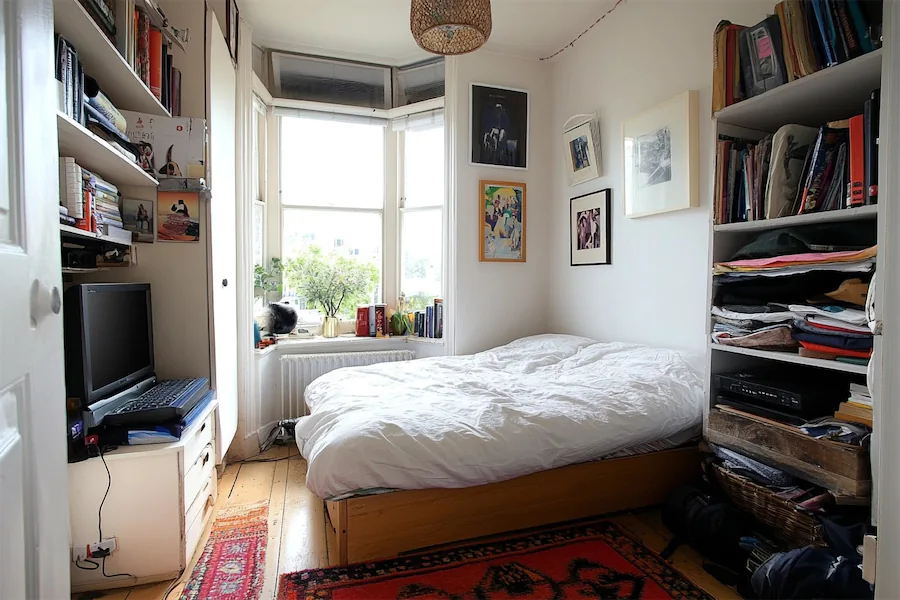Designing a compact bedroom requires thoughtful planning to maximize space while maintaining comfort and style.
History and Origins of Compact Bedrooms
The evolution of compact bedrooms is closely tied to urbanization and the increasing demand for housing in densely populated cities. As urban living spaces became smaller, efficient bedroom designs emerged to accommodate the need for functionality without compromising aesthetics.
Key Features of Compact Bedrooms
- Multifunctional Furniture: Incorporating pieces like storage beds, fold-out desks, or wall-mounted shelves optimizes space utilization. These elements serve dual purposes, reducing clutter and enhancing functionality.
- Strategic Layouts: Arranging furniture to allow for free movement and utilizing vertical space can make a small room feel more open and organized. Placing the bed against a wall or in a corner can free up floor space, while wall-mounted lighting fixtures save surface area on nightstands.
- Light Color Schemes: Employing light hues on walls and furnishings creates an airy atmosphere, making the room appear larger. Soft neutrals and pastels reflect light, enhancing the sense of space.
- Mirrors: Strategically placing mirrors reflects light and gives the illusion of a more expansive area. A large mirror on one wall or mirrored closet doors can significantly open up the space.
- Under-Bed Storage: Utilizing the space beneath the bed for storage helps keep the room tidy and maximizes available area. Drawers or storage boxes can house clothing, linens, or other items, reducing the need for additional furniture.
Applications of Compact Bedroom Designs
- Urban Apartments: Ideal for city dwellings where space is limited, compact bedroom designs ensure functionality without sacrificing style. Incorporating built-in storage solutions and multifunctional furniture can make the most of limited square footage.
- Guest Rooms: Smaller bedrooms can be transformed into cozy guest accommodations with thoughtful design and space-saving furniture. A daybed with a trundle or a sofa bed can provide comfortable sleeping arrangements without occupying permanent space.
- Studio Apartments: In open-plan living areas, defining a compact bedroom space can create a sense of privacy and organization. Room dividers, such as curtains or shelving units, can delineate the sleeping area without constructing permanent walls.
Considerations When Designing Compact Bedrooms
- Clutter Management: Maintaining a clutter-free environment is essential to prevent the space from feeling cramped. Regular organization and the use of storage solutions help keep belongings out of sight.
- Lighting: Adequate lighting, including ambient, task, and accent lighting, enhances the room’s functionality and ambiance. Layered lighting can create depth and make the space feel more inviting.
- Personalization: Incorporating personal touches through decor and accessories adds character without overwhelming the space. Selecting a few meaningful items rather than numerous decorative pieces maintains a sense of openness.
Conclusion
A well-designed compact bedroom balances functionality and aesthetics, creating a comfortable and efficient space. By utilizing multifunctional furniture, strategic layouts, and thoughtful decor, even the smallest bedrooms can become inviting retreats.
